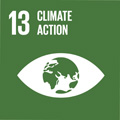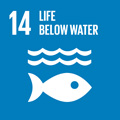- Docente: Daniele Fabbri
- Credits: 6
- SSD: CHIM/01
- Language: Italian
- Moduli: Daniele Fabbri (Modulo 1) Cristian Torri (Modulo 2)
- Teaching Mode: Traditional lectures (Modulo 1) Traditional lectures (Modulo 2)
- Campus: Ravenna
- Corso: Second cycle degree programme (LM) in Environmental Assessment and Management (cod. 8418)
Learning outcomes
At the end of the course, students have a knowledge of the chemical determinations adopted in the evaluation of environmental quality. They should be able to understand and apply methodologies in chemical environmental monitoring of pollutants in different compartments, criteria to assess the reliability of chemical data and tools for their interpretation in relation to the composition of environmental matrices (air, water, soil/sediment), to the sources of contamination and their effect on the environment.
Course contents
Evaluation of environmental quality. Environmental quality standards. Contamination and pollution. Chemical
substances, molecular identity, natural and artificial, additives, byproducts. Elements and speciation. Priority and emergenging pollutants, principal
pollutant classes (VOCs, VHOCs, PAHs, POPs, PPCPs, etc.). Greenhouses gas. Stratospheric ozone depleting substances. Chemical monitoring. Evaluation of analytical results, method
validation, figures of merit.Chemical characteristics of contaminants and matrices, Vapour pressure, water solubility, distribution coefficients. ackground levels. Source analysis, molecular markers, fingerprinting, compound ratios, isotopic ratios. Chemical transformations, photodegradation. TEQ. Laboratory exercise. Information literacy in chemical monitoring.
Readings/Bibliography
Powerpoint presentation accessible in IOL.
Textbooks accessible on-line and/or at the "Biblioteca di SCienze Ambientali":
C.Baird, M.Cann. Chimica Ambientale, III edizione Italiana sulla V edizione americana. Zanichelli, 2012. Ozono stratosferico (Cap.1-2). Smog fotochimico (Cap.3). Metalli pesanti, speciazione Hg, As(Cap.12). DDT, PCB, PCDD/F, PBDE, PFAS, IPA (Cap. 13, 14, 15). Matrici (Cap. 10, 16).
B.B.Kebbekus, S.Mitra, Environmental Chemical Analysis, Blackie Acad.s, 1998. Cap.1 (misure ambientali), Cap.2 (campionamento ambientale), Cap.6(preparazione del campione), Cap.7 (analisi dell’aria).
Altri: Key concept in Environmental Chemistry G. Hanrahan. Ed. Academic Press;
http://www.sciencedirect.com/science/book/9780123749932 ; Chimica ambientale Environmental Chemistry, Stanley Manahan, Stanley E. Manahan
http [http://www.crcnetbase.com/isbn/978-1-56670-492-2]:// [http://www.crcnetbase.com/isbn/978-1-56670-492-2]www.crcnetbase.com/isbn/978-1-56670-492-2
Teaching methods
Lecturing, videoprojection, tutorials, utilisation of data base
for searching analytical methods (database, ecc), presentation and discussion of case studies from scientific literature or institutional reports )e.g. Minamata case).
Assessment methods
Oral examination. Students will be
required to discuss a journal article dealing with a case study of
chemical monitoring. The following aspects will be examined:
bibliography, objectives and conclusion on environmental quality,
method validation, presentation of results, pollutant and matrix
characteristics. The report of the laboratory exercise will be also evaluated.
Teaching tools
Videoprojector. PC. Data base.
Links to further information
http://www.unibo.it/docenti/dani.fabbri
Office hours
See the website of Daniele Fabbri
See the website of Cristian Torri
SDGs



This teaching activity contributes to the achievement of the Sustainable Development Goals of the UN 2030 Agenda.
